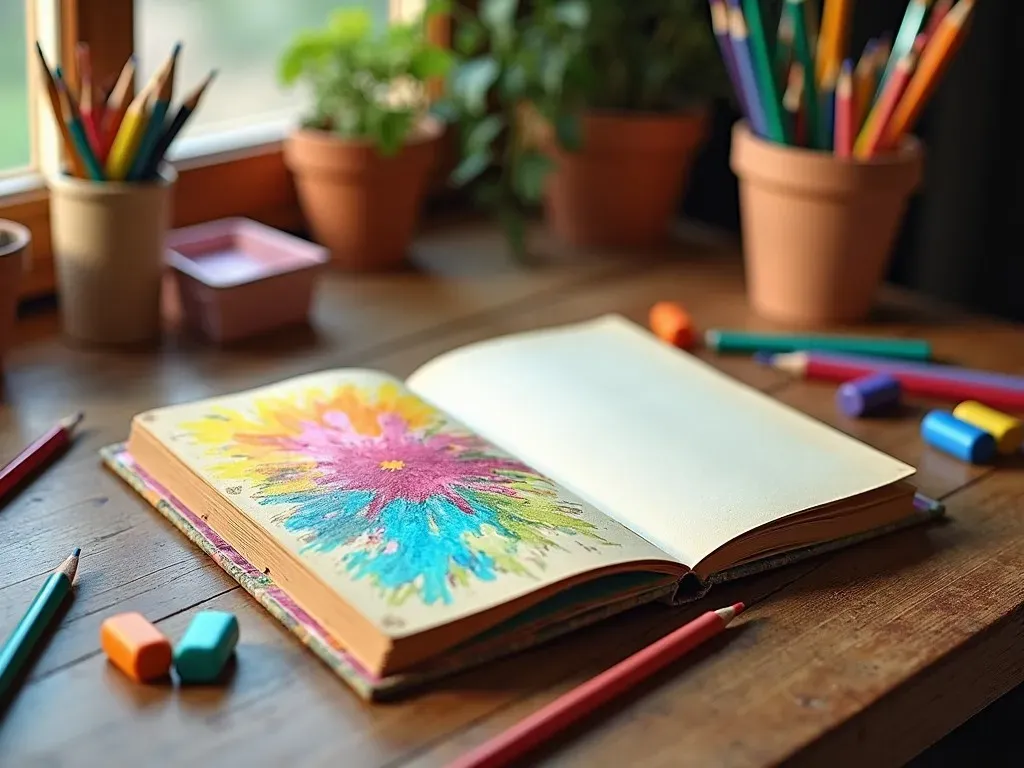Drawing and sketching Supplies are fundamental materials that every artist, whether beginner or experienced, should have on hand. These vital tools not only enhance your creativity but also influence the final outcome of your art. From pencils to paper, investing in high-quality materials can elevate your work and make your artistic journey more enjoyable.
Essential Drawing and Sketching Supplies
1. Quality Drawing Pencils
Not all pencils are created equal, and starting with professional-grade art pencils can significantly improve your drawing experience. Here’s a simple list of the types of pencils you should consider:
| Pencil Type | Description | Example Use |
|---|---|---|
| Graphite Pencils | Varying degrees of hardness (H, B, etc.) for detailed lines. | Sketching outlines & details. |
| Colored Pencils | Bright hues available in a variety of brands. | Adding color to sketches. |
| Charcoal Pencils | Thick and dark lines with rich textures. | Bold sketches and shading. |
2. Quality Paper
The type of paper you use can make a significant difference in your drawing results. The "tooth" of the paper affects how your drawing medium interacts with the surface. Here’s a breakdown of popular paper types:
| Paper Type | Texture | Best For |
|---|---|---|
| Sketch Paper | Smooth | Initial sketches and light drawings. |
| Bristol Board | Medium | Inking and detailed illustrations. |
| Watercolor Paper | Rough | Mixed media and water-soluble materials. |
3. Erasers and Sharpeners
Keeping your workspace clean is crucial for an effective drawing session. Here are essential tools that help maintain precision in your work:
- Kneaded Eraser: Malleable eraser that removes graphite without smudging.
- Vinyl Eraser: Ideal for cleanly erasing pencil without tearing paper.
- Pencil Sharpener: Essential for keeping your pencil tips sharp and ready for use.
4. Blending Tools
Achieving soft edges and gradients in your drawing is made easier with blending tools:
- Tortillons: Great for smudging and blending pencil marks.
- Paper Stumps: Firm and allows for precise blending.
- Soft Brushes: Useful for charcoal and pastel drawings.
5. Sketchbooks
Choosing the right sketchbook can inspire you and keep your work organized. Here’s what to consider:
| Feature | Description |
|---|---|
| Paper Type | Select based on your preferred medium (graphite, charcoal, etc.). |
| Binding Style | Hardbound for durability or spiral-bound for ease of use. |
| Size | Larger sizes for elaborate drawings, smaller for travel. |
6. Additional art supplies
The world of art supplies extends beyond traditional drawing materials. Consider including the following for a complete toolkit:
- Markers: Permanent markers for bold lines and detailing.
- Pastels: Soft pastels for vibrant, rich colors.
- Watercolor Pencils: For versatile sketching and water effects.
Top Brands to Check Out
When it comes to art supplies, brand quality matters. Here’s a curated list of trusted brands offering exceptional drawing and sketching supplies:
| Brand Name | Product Type | Noteworthy Products |
|---|---|---|
| Faber-Castell | Pencils | Polychromos Colored Pencils, Graphite Pencils |
| Prismacolor | Colored Pencils | Premier Colored Pencils |
| Strathmore | Paper | Sketch Pads, Mixed Media Paper |
| Cretacolor | Charcoal | Charcoal Pencils, Graphite Pencils |
For further insight and more product recommendations, visit Jerry’s Artarama.
Tips for Selecting Art Supplies
- Try Before You Buy: Many local artisan shops offer sample days where you can test pencils and papers.
- Invest Gradually: Start with basic supplies and build up your collection as you learn and refine your style.
- Care for Your Supplies: Proper storage and usage prolong the life of your materials.
FAQs
What should I consider when buying drawing supplies?
A: Focus on the medium you want to explore and the quality of the supplies. Investing in better materials can greatly impact your drawings.
Are expensive art supplies worth it?
A: High-quality materials offer superior performance and can make the process of creating art more enjoyable. They often last longer and yield better results.
How often should I replace my art supplies?
A: It depends on usage. For frequent artists, pencils may need replacement once they’re shortened significantly, while sketchbook pages may need more frequent updating.
Is it necessary to have a variety of pencils?
A: Yes, different pencil hardnesses (H for light lines, B for dark lines) allow for more versatile and controlled sketching.
Final Thoughts
Equipping yourself with the right drawing and sketching supplies is vital for any artist looking to unleash their full potential. Whether you’re creating deep, emotional pieces with charcoal or delicate sketches with graphite pencils, the quality of your supplies will undoubtedly influence your artistic expression.
